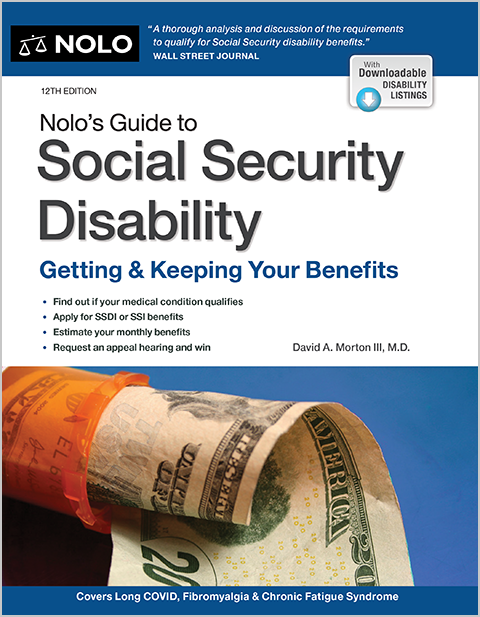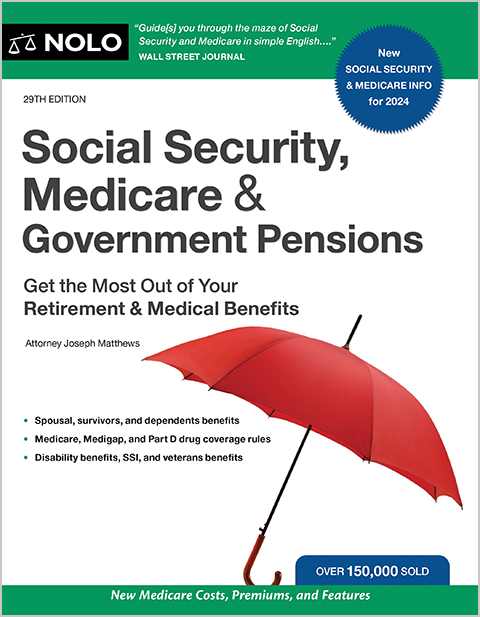The QMB, SLMB, and QI programs help pay Medicare premiums, deductibles, and co-pays. Learn how to qualify in 2024.
Many people who are elderly or have disabilities have trouble paying the portion of medical bills left unpaid by Medicare. But they can't afford private Medigap insurance or a Medicare Advantage plan and don't qualify for Medicaid. If this is your situation, you might be able to get help paying Medicare premiums and portions of Medicare-covered costs that Medicare doesn't pay.
- What Are the QMB, SLMB, and QI programs?
- What Is a Qualified Medicare Beneficiary (QMB)?
- What Is a Specified Low-Income Medicare Beneficiary (SLMB)?
- What Is a Qualifying Individual (QI)?
- MSP Income and Asset Limits
- Applying for QMB, SLMB, or QI
- Can I Get Help With Medicare Part D Costs?
- What to Do If You're Denied Coverage Under QMB, SLMB, or QI?
- Getting Assistance With Your MSP Appeal
What Are the QMB, SLMB, and QI programs?
Each state's Medicaid program runs three cost-reduction programs—called Qualified Medicare Beneficiary (QMB), Specified Low-Income Medicare Beneficiary (SLMB), and Qualifying Individual (QI). In addition, you may also qualify for "Extra Help" paying for the Medicare Part D Prescription Drug Program.
Here are the income and asset limits for each of the three Medicare Savings Programs (MSPs), and what they cover. Some states have less restrictive limits (meaning it's easier to qualify) for disabled or elderly people.
What Is a Qualified Medicare Beneficiary (QMB)?
If you're eligible for Medicare and meet the income and asset eligibility requirements for the QMB program, your state's QMB program will pay all of your Medicare Part A and Part B premiums, deductibles, and coinsurance. Depending on how much you use Medicare-covered services in a year, this could mean savings of up to several thousand dollars. You may get a bill for a small Medicaid co-pay if one applies.
What Is the QMB Income Limit for 2025?
To be eligible as a Qualified Medicare Beneficiary (QMB), your income must be no more than slightly above the Federal Poverty Guidelines (FPG), or Federal Poverty Level (FPL). This figure is established each year by the federal government; in 2025, the poverty level is $15,650 per year for an individual and $21,150 per year for a couple. These figures are somewhat higher in Alaska and Hawaii and a few other states.
What Does Social Security Count as Income for QMB?
The government doesn't count certain amounts of income in determining QMB eligibility. QMB follows the SSI (Supplemental Security Income) guidelines on what income should be counted, which means roughly half of your income from work is not counted. But Social Security benefits do count as income for QMB, including disability and retirement benefits.
If, after applying the SSI rules, the figure you arrive at is anywhere close to the QMB limit, it's worth applying for it. In 2025, the QMB income limit is $1,325 in monthly countable income for an individual and $1,783 for a couple. (The limits are somewhat higher in Alaska and Hawaii.)
So if you're still working and most of your income comes from your earnings, you may be able to qualify as a QMB even if your total income is almost twice the federal poverty level.
What Are the QMB Limits for Assets?
The government puts a limit on the value of the assets you can own and still qualify as a QMB. The QMB limit for assets is $9,660 for an individual and $14,470 for a married couple. But many assets, such as your house, your car, and certain personal and household goods, aren't part of the resources that are counted. QMB follows the SSI guidelines for which assets are countable.
What Is a Specified Low-Income Medicare Beneficiary (SLMB)?
If your income is slightly too high for you to qualify for QMB benefits, you may still be eligible for another state medical assistance program: Specified Low-Income Medicare Beneficiary (SLMB). The resource limits for SLMB eligibility are the same as for a QMB, but the income limits are 20% higher.
What Are the SLMB Income Limits for 2025?
If your counted monthly income—after the adjustments made in calculating income for SSI purposes—is under $1,585 for an individual, or $2,135 for a couple (in 2025), you're likely to qualify for SLMB support. (These figures go up slightly each year.)
What Are the SLMB Limits for Assets?
The asset limits for SLMB are the same as for the QMB program: $9,660 for an individual and $14,470 for a married couple.
What Does SLMB Cover?
Because the SLMB program is for people with higher incomes, SLMBs get fewer benefits than QMBs. The SLMB program pays the Medicare Part B monthly premium, but SLMB doesn't pay any Medicare co-pays, deductibles, or coinsurance amounts. Nonetheless, this means potential savings of more than a thousand dollars per year.
What Is a Qualifying Individual (QI)?
If your income is too high for you to qualify for SLMB benefits, you may still be eligible for financial help as a Qualifying Individual (QI). The resource limits for eligibility are the same as for a QMB or SLMB, but the income limits are 80% higher, depending on the program.
What Are the QI Income Limits for 2025?
If your counted monthly income is under $1,781 for an individual, or $2,400 for a couple (in 2025), you are likely to qualify for QI support.
What Are the QI Limits for Assets?
The asset limits for QI are $9,660 for an individual and $14,470 for a married couple.
What Does the QI Program Cover?
The QI program will pay all or part of your Medicare Part B monthly premium, but won't pay for any Medicare co-pays, deductibles, or coinsurance amounts. Also, money for the QI program is limited. You must re-apply each year, and applications are approved on a first-come, first-served basis, until the money runs out.
MSP Income and Asset Limits
Here are the monthly income limits and the resource limits for all three MSP programs.
| Individual | Couple | |||
|
Income Limit |
Asset Limit |
Income Limit |
Asset Limit |
|
|
QMB |
$1,325 |
$9,660 |
$1,783 |
$14,470 |
|
SLMB |
$1,585 |
$9,660 |
$2,135 |
$14,470 |
|
QI |
$1,781 |
$9,660 |
$2,400 |
$14,470 |
Applying for QMB, SLMB, or QI
Before you can get coverage by the QMB, SLMB, or QI programs, you must file a written application separate from your Medicare application. If you are found ineligible for one program, you may still be found eligible for one of the others.
Where to File Your Application
To qualify for the QMB, SLMB, or QI programs, you must file a written application with the agency that handles Medicaid in your state—usually your county's Department of Social Services or Social Welfare Department.
What Documents Are Required
Because eligibility for the QMB, SLMB, or QI programs depends on your financial situation, many of the documents you must bring to the Medicaid office are those that will verify your income and assets.
Although a Medicaid eligibility worker might require additional specific information from you, you'll at least be able to get the application process started if you bring:
- pay stubs, income tax returns, Social Security benefits information, and/or other evidence of your current income
- papers showing all your savings and other financial assets, such as bankbooks, insurance policies, and stock certificates
- automobile registration papers if you own a car
- your Social Security card or number
- information about your spouse's income and separate assets, if the two of you live together, and
- medical bills from the previous three months, as well as medical records or reports to confirm any medical condition that will require treatment in the near future. If you don't have copies of these bills, records, or reports, bring the names and addresses of the doctors, hospitals, or other medical providers who are treating you.
Can I Get Help With Medicare Part D Costs?
Anyone who qualifies for one of the above Medicare Savings Programs will also qualify for the Part D Extra Help program, which pays Part D premiums and deductibles for the prescription drug program.
What to Do If You're Denied Coverage Under QMB, SLMB, or QI?
If you're denied eligibility for a Medicare assistance program, you have a right to appeal. If you believe you should be eligible for one of the programs, go to the office where you applied. Ask about the procedure in your state for getting a hearing to appeal that decision.
At an appeal hearing, you can present any documents or other papers—proof of income, assets, medical bills—that you think support your claim. You'll also be allowed to explain why the Medicaid decision was wrong.
The hearing itself is usually held at or near the welfare or social service office. You are permitted to have a friend, relative, social worker, lawyer, or other representative appear with you to help at the hearing.
Although the exact procedure for obtaining this hearing, and the hearing itself, may be slightly different from state to state, they all resemble very closely the hearings given to applicants for Social Security benefits. For more information, see Nolo's articles on Medicaid appeals.
Getting Assistance With Your MSP Appeal
If you're denied QMB, SLMB, or QI, you may want to consult with someone experienced in the subject to help you prepare your appeal. One place you can find quality free assistance with these matters is the nearest office of the State Health Insurance Assistance Program (SHIP).
If there's no SHIP office near you, you may be able to find other assistance through your local senior center or by calling the Senior Information line listed in the white pages of your telephone directory. You may also be able to hire a Medicaid lawyer to help.
- What Are the QMB, SLMB, and QI programs?
- What Is a Qualified Medicare Beneficiary (QMB)?
- What Is a Specified Low-Income Medicare Beneficiary (SLMB)?
- What Is a Qualifying Individual (QI)?
- MSP Income and Asset Limits
- Applying for QMB, SLMB, or QI
- Can I Get Help With Medicare Part D Costs?
- What to Do If You're Denied Coverage Under QMB, SLMB, or QI?
- Getting Assistance With Your MSP Appeal


